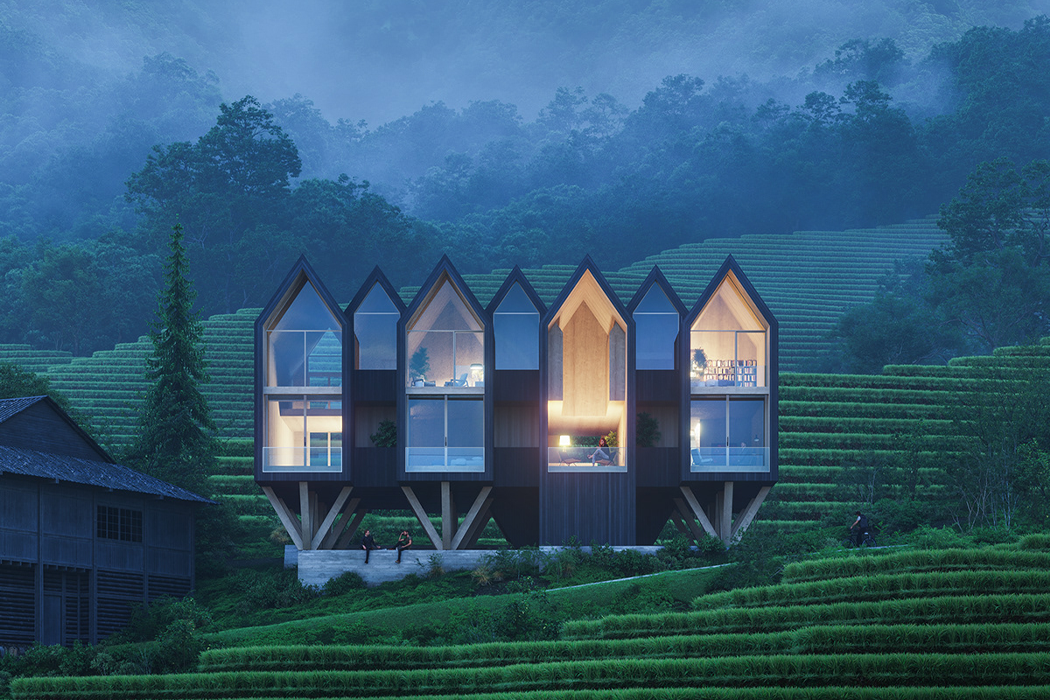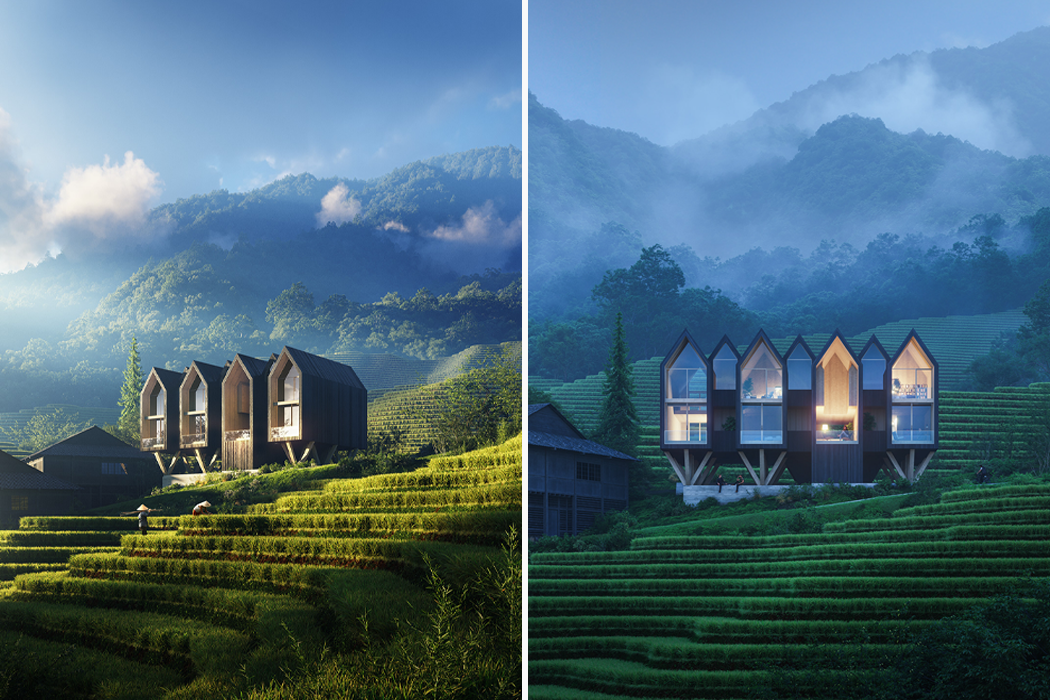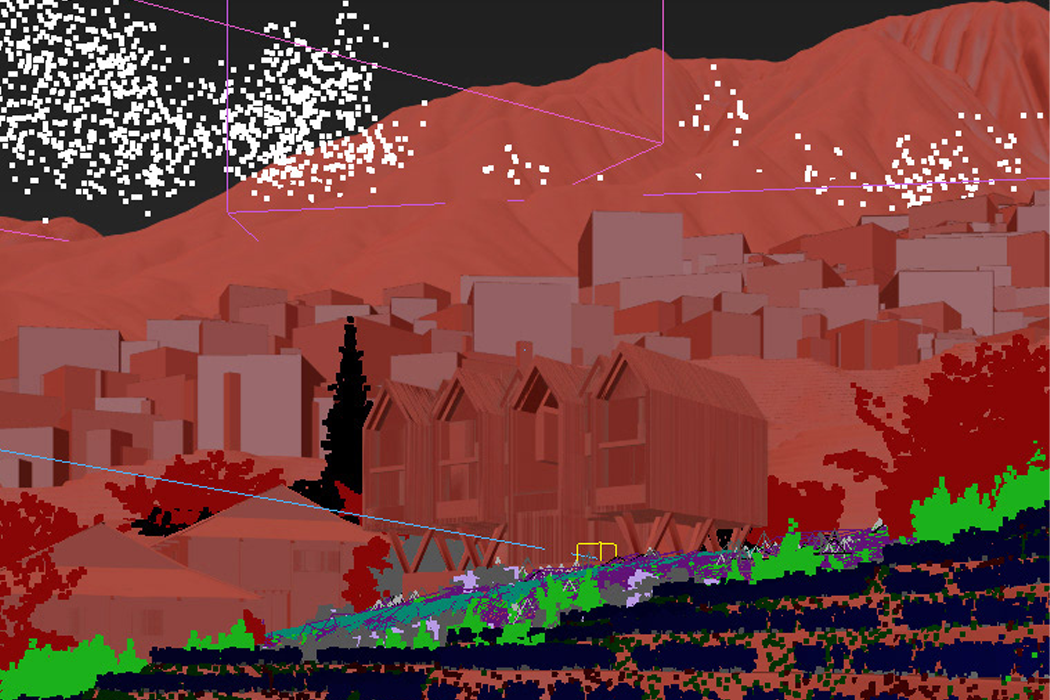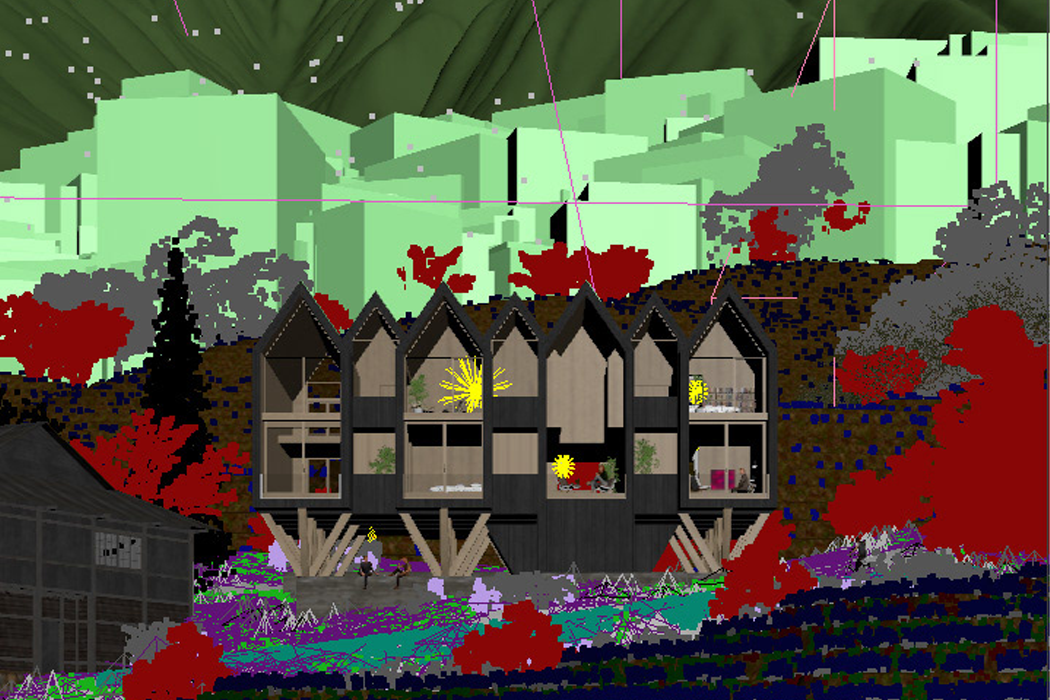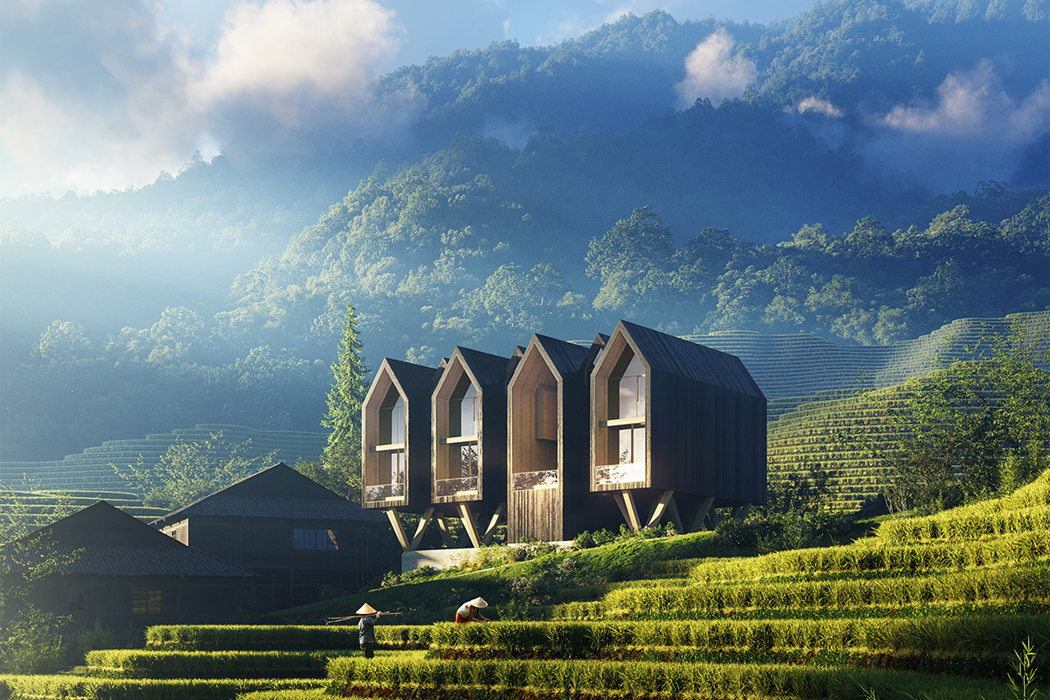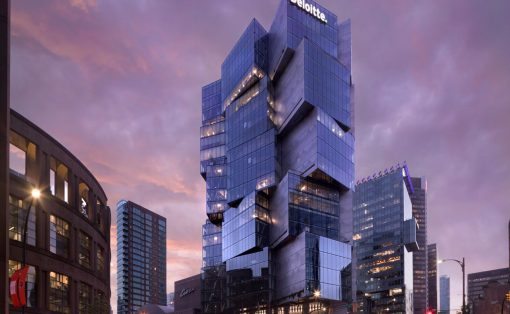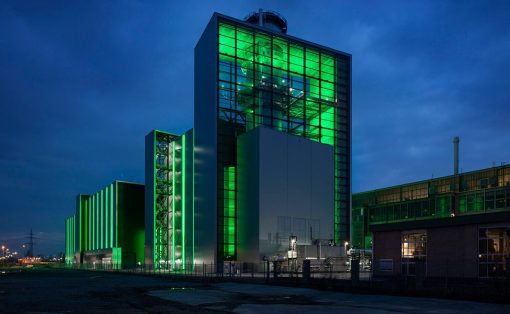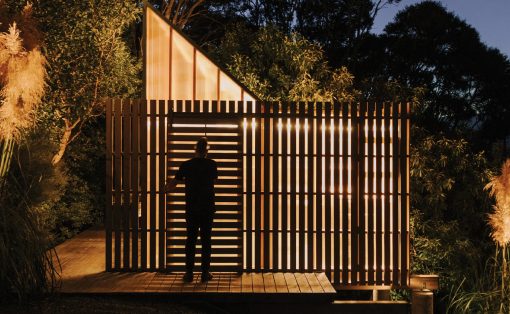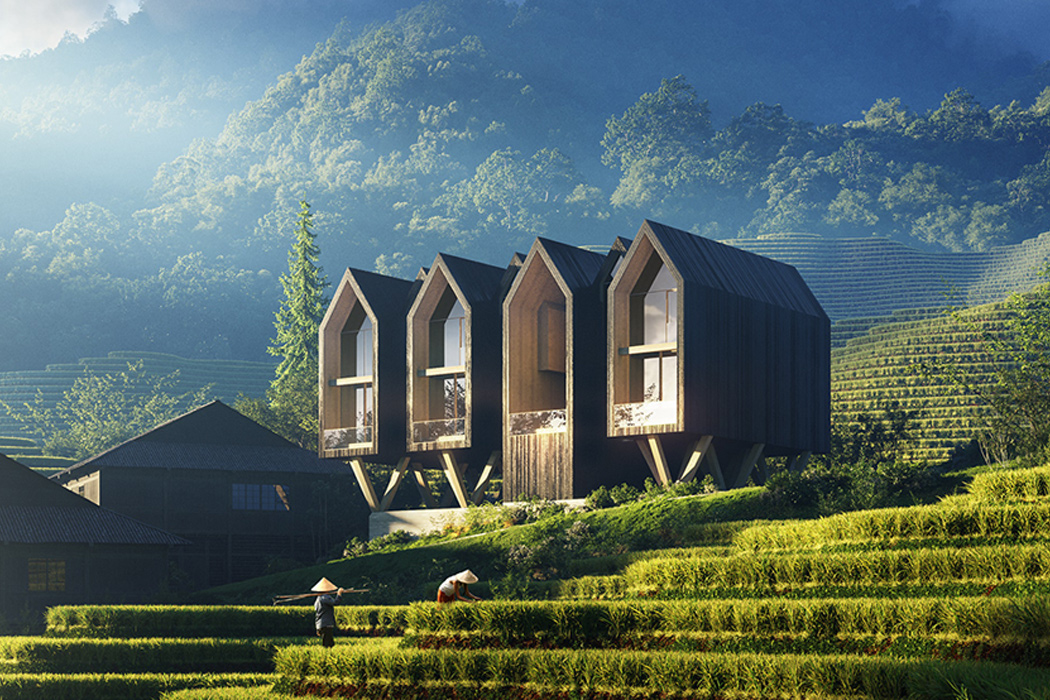
Terraces of rice paddy fields cascade down mountain slopes so evenly, from a bird’s eye view, it might appear they’ve been machine-cut and curated, but these world wonders come with an ancient history of farming diligence and a respectful tactile approach when working the land. Many terraced rice paddy fields are designed by adhering to the curving gradient of the mountain, carving massive steps into its preexisting contours. Zooming out, the individual plots of rice transform into rows of staggered terraces forming both sinuous and moiré patterns. Noticing the beauty and cultural significance of terraced rice paddy fields, Denis Guchev with Studio Precht imagined what living amidst the farming wonders might look like with his architectural visualization project, Rice Pad.
Resembling the congruency of multiple rice paddy terraces, Rice Pad’s contiguous pitched roofs mimic rows of high mountain summits – the same landscape into which terraces of rice paddies are carved. Rice Pad would likely be ebony-stained to easily slink into the darkness of night come sundown, with either pine or ashwood accents for each roof’s eave and the main centered gable. During the day, sunlight might reflect off the flooded rice paddies, lighting up each home’s dark panels of timber. Then at night, warm, yellow light pours from Rice Pad’s own terraces and windows, becoming a sort of lighthouse between the curving tides of rice paddies. The seven-roofed structure appears as four cantilever main houses, joined by what appears to be an exposed hallway that runs perpendicular to each house. Floor-to-ceiling windows fill the entirety of each house’s front-facing facades, offering expansive views of the rolling terraces of rice paddy fields for miles.
In the year 2020, we’ve seen some pretty impressive eco-friendly architectural designs, like modular cabins, houseboats, and tiny homes, that seamlessly blend into their surrounding natural environment. Some houses are constructed entirely offsite and then transported to a vacated plot of land deep in the forest. Others might utilize steel moorings, like some floating homes in Amsterdam. Devising a plan to bring Rice Pad to the terraced wonders of rice farming safely and harmlessly is another ball game entirely, but if 2020 taught us anything, it’s to expect the unexpected.
Designer: Denis Guchev x Studio Precht
